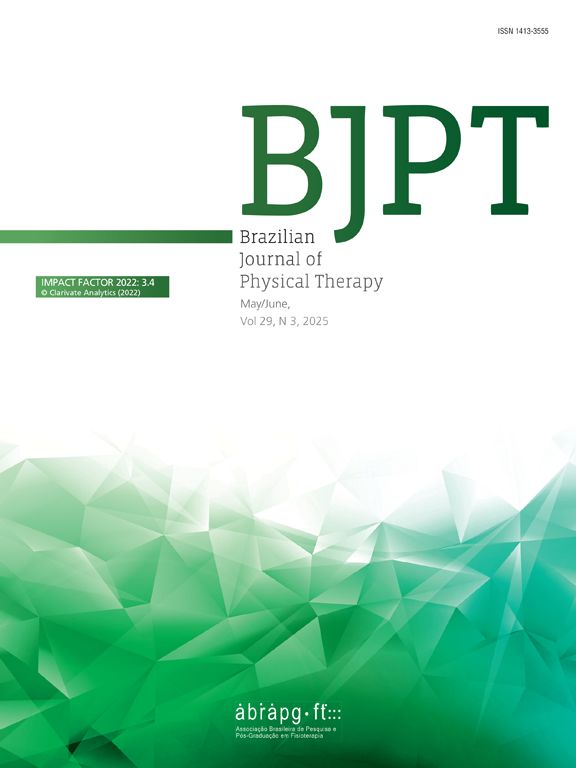
1st STUDENT SCIENTIFIC CONFERENCE OF THE BRAZILIAN ASSOCIATION FOR RESEARCH AND POSTGRADUATE IN PHYSIOTHERAPY (ABRAPG-FT)
Mais dadosThe sarcopenia associated with aging is characterized by loss of muscle mass and strength, decline in functionality, independence, and quality of life. With increasing life expectancy in Brazil, the number of elderly is growing, and with this, attention must be paid to changes in sarcopenia prevalence rates over the years.
ObjectiveThis systematic review aims to estimate and update data on the prevalence of sarcopenia in Brazilian elderly.
MethodsElectronic and manual searches of databases, relevant journals and reference lists with no language restriction were performed. English descriptors (mentioned in a previous study¹) were used in the detailed search strategy. Cross-sectional, cohort, longitudinal and all studies that reported the prevalence of sarcopenia in Brazilian elderly individuals aged 60 years or older, whether community-based, institutionalized, clinical, outpatient and/or inpatient, were included in the study. The sub-classifications of Sarcopenia investigated were pre or risk of sarcopenia, confirmed sarcopenia, severe or severe sarcopenia. After evaluating titles and abstracts, potential full texts were assessed for eligibility by two independent reviewers (SPC and LACT). Studies that met the eligibility criteria were included. The search strategy used English descriptors related to "prevalence", "epidemiology", "sarcopenia", "elderly", "Brazil" and their variations¹. Register PROSPERO 2022 CRD42022355825.
Preliminary resultsA total of 4830 studies were found in databases that included MEDLINE, AMED, CINAHL, EMBASE, LILACS, SciELO, Google Scholar hand search. In addition, a manual search of relevant journals and reference lists of eligible studies was performed, and Brazilian experts in the field were consulted to identify any important studies and previous systematic reviews (November 2022). Of these studies, 152 were duplicate articles, 4678 had their titles and abstracts evaluated, 369 articles were selected for reading in full. Of the total number of studies analyzed, 60 were included, with 18,258 participants. The mean prevalence of sarcopenia was 28.59% [0.3% (minimum value) to 63.2% (maximum value)]. Among the likely factors contributing to the variability in the prevalence of sarcopenia in Brazil are the heterogeneity of diagnostic criteria and the changes in muscle mass, muscle strength, and physical function assessed by different instruments ranging from calf measurements to dual-energy x-ray absorptiometry.
ConclusionAging-related sarcopenia is an emerging public health problem in Brazil. Updates on the subject show an increase in the prevalence of sarcopenia in the elderly in Brazil. Thus, there is an urgent need for planning health strategies aimed at the prevention of sarcopenia in the elderly population.
ImplicationsImprovement of public health and consequently the functionality of the elderly.
Conflict of interest: The authors declare no conflict of interest.
Acknowledgment: FAPEMIG, CNPq e CAPES.
Ethics committee approval: Not applicable.




